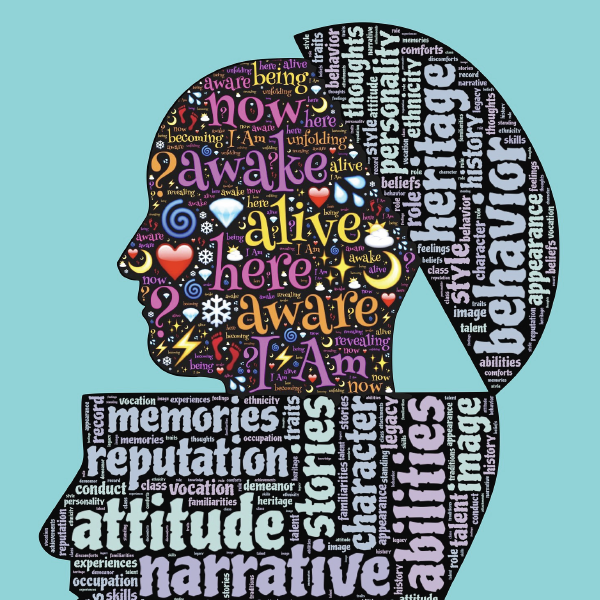Summary: Functional Context Theory is a cognitive learning theory that was developed specifically for educating adults in businesses and the military. Originator: Thomas Sticht Keywords: Job task analysis, knowledge base, literacy, learning strategies, instructional strategies Functional Context Theory (Sticht) There are various styles of learning requiring educators to learn about their students so that they […]
Gestalt Theory (von Ehrenfels)
Summary: The Gestalt theory of learning originated in Germany, being put forth by three German theorists who were inspired by the works and ideas of the man who gave the learning theory its name. Graf Christian von Ehrenfels was a learning theorist who took the holistic approach to learning by putting forth the idea that learning takes place as students were able to comprehend a concept in its entirety, rather than broken up into parts.
Key Terms: holistic, mechanical response, phenomenology, Isomorphism, factor of closure, factor of proximity, trace factor, factor of similarity, figure ground effect
Theorists: Graf Christian von Ehrenfels, Wertheimer, Kohler, Koffka, insight learning
Gestalt Theory
The term “Gestalt,” comes from a German word that roughly means pattern or form. The main tenet of the Gestalt theory is that the whole is greater than the sum of its parts; learning is more than just invoking mechanical responses from learners.
As with other learning theories, the Gestalt theory has laws of organization by which it must function. These organizational laws already exist in the make-up of the human mind and how perceptions are structured. Gestalt theorists propose that the experiences and perceptions of learners have a significant impact on the way that they learn.
One aspect of Gestalt is phenomenology, which is the study of how people organize learning by looking at
Grit (Duckworth, Matthews, Kelly, Peterson)
Summary: Grit is a quality that learners have that enables them to persevere while facing struggles and obstacles. This can help the learners attain success because they don’t give up until they reach their goals. Originators & proponents: Angela Duckworth (University of Pennsylvania); Michael D. Matthews (USMA, West Point); Dennis R. Kelly (USMA, West Point); […]
Flow (Csíkszentmihályi)
Summary: Flow is an optimal psychological state that people experience when engaged in an activity that is both appropriately challenging to one’s skill level, often resulting in immersion and concentrated focus on a task. This can result in deep learning and high levels of personal and work satisfaction. Originators & proponents: Mihály Csíkszentmihályi[1][2] Keywords: anxiety/stress, […]
Affordance Theory (Gibson)
Summary: Affordance theory states that the world is perceived not only in terms of object shapes and spatial relationships but also in terms of object possibilities for action (affordances) — perception drives action.
Originators: J. J. Gibson (1904-1979)
Keywords: Affordances, direct perception, ecological
Affordance Theory (J. J. Gibson)
American psychologist James Jerome Gibson was influential in changing the way we consider visual perception. According to his theory, perception of the environment inevitably leads to some course of action. Affordances, or clues in the environment that indicate possibilities for action, are perceived in a direct, immediate way with no sensory processing. Examples include: buttons for pushing, knobs for turning, handles for pulling, levers for sliding, etc.
Erikson’s Stages of Development
An eight stage theory of identity and psychosocial development. Erik Erikson, a German psychoanalyst heavily influenced by Sigmund Freud, explored three aspects of identity: the ego identity (self), personal identity (the personal idiosyncrasies that distinguish a person from another, social/cultural identity (the collection of social roles a person might play)[1]. Contents Contributors Key Concepts Resources […]
Stage Theory of Cognitive Development (Piaget)
Summary: Piaget’s Stage Theory of Cognitive Development is a description of cognitive development as four distinct stages in children: sensorimotor, preoperational, concrete, and formal.
Originator: Jean Piaget (1896-1980)
Key Terms: Sensorimotor, preoperational, concrete, formal, accommodation, assimilation.
Piaget’s Stage Theory of Cognitive Development
Swiss biologist and psychologist Jean Piaget (1896-1980) observed his children (and their process of making sense of the world around them) and eventually developed a four-stage model of how the mind processes new information encountered. He posited that children progress through 4 stages and that they all do so in the same order. These four stages are:
Sensorimotor stage (Birth to 2 years old). The infant builds an understanding of himself or herself and reality (and how things work) through interactions with the environment. It is able to differentiate between itself and other objects. Learning takes place via assimilation (the organization of information and absorbing it into existing schema) and accommodation (when an object cannot be assimilated and the schemata have to be modified to include the object.
Preoperational stage (ages 2 to 4). The child is not yet able to conceptualize abstractly and needs concrete physical situations. Objects are classified in simple ways, especially by important features.
GOMS Model (Card, Moran, and Newell)
Summary: The GOMS Model is a human information processing model that predicts what skilled users will do in seemingly unpredictable situations. Originators and proponents: Card, Moran and Newell in 1983[1]; Bonnie E. John and David E. Kieras in 1996[2]. Keywords: Goals, operators, methods, selection rules GOMS Model (Card, Moran, and Newell) This model is the general […]
Multiple Intelligences Theory (Gardner)
Summary: Multiple Intelligences Theory posits that there are seven ways people understand in the world, described by Gardner as seven intelligences.
Originator: Howard Gardner in 1983.
Key Terms: Linguistic, Logical-Mathematical, Visual-Spatial, Body-Kinesthetic, Musical-Rhythmic, Interpersonal, Intrapersonal.
Multiple Intelligences Theory
Developed by Harvard psychologist Howard Gardner in 1983 and subsequently refined, this theory states there are at least seven ways (“intelligences”) that people understand and perceive the world. These intelligences may not be exhaustive. Gardner lists the following:
Linguistic. The ability to use spoken or written words.
Logical-Mathematical. Inductive and deductive thinking and reasoning abilities, logic, as well as the use of numbers and abstract pattern recognition.
Visual-Spatial. The ability to mentally visualize objects and spatial dimensions.
Body-Kinesthetic. The wisdom of the body and the ability to control physical motion
Musical-Rhythmic. The ability to master music as well as rhythms, tones and beats.
Interpersonal. The ability to communicate effectively with other people and to be able to develop relationships.
Intrapersonal. The ability to understand one’s own emotions, motivations, inner states of being, and self-reflection.
This theory, while widely popular over the last two decades, has its share of critics. Some argue …
Cognitive Load Theory of Multimedia Learning (Sweller)
Summary: A theory that focuses the load on working memory during instruction. Originators and proponents: John Sweller (1946-) Keywords: cognitive load theory, working memory, multimedia learning









